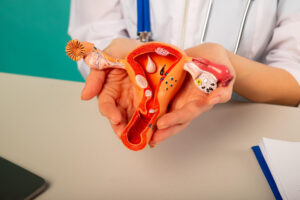In recent years, the number of twin births has risen—especially among couples who conceive through assisted reproductive technologies like IVF. While a twin pregnancy may sound exciting, it also brings added risks and complexities. If you’re considering in vitro fertilization (IVF), you may be wondering: What are the chances of having twins with IVF?
This article breaks down everything you need to know about twins with IVF—from how it happens, the statistics, risk factors, and the medical and emotional aspects of carrying twins.
Understanding IVF: A Quick Overview
IVF, or in vitro fertilisation, is a fertility treatment where an egg is fertilised by sperm outside the body in a lab. Once fertilized, the embryo is transferred into the uterus with the hope that it will implant and lead to pregnancy.
Doctors sometimes transfer more than one embryo to increase the chances of a successful pregnancy. This is one of the key reasons IVF increases the likelihood of twins or even higher-order multiples (triplets or more).
How Do Twins Happen with IVF?
There are two main types of twins:
- Fraternal Twins (Dizygotic): Occur when two separate eggs are fertilized by two separate sperm. In IVF, this happens when two embryos are transferred and both implant successfully.
- Identical Twins (Monozygotic): Occur when a single fertilized egg splits into two embryos. This can happen naturally—even when only one embryo is transferred.
With IVF, fraternal twins are far more common because fertility specialists often transfer multiple embryos to improve pregnancy rates.
What Are the Actual Chances of Having Twins with IVF?
According to multiple studies and data from fertility clinics:
- The average rate of twins with IVF is about 20–30% when two embryos are transferred.
- The risk drops significantly when only one embryo is transferred, a procedure known as elective single embryo transfer (eSET). However, even with eSET, about 1–2% of pregnancies may still result in identical twins.
- In contrast, the natural rate of twins in non-IVF pregnancies is around 1.1% (mostly fraternal twins).
So, twins with IVF are significantly more common—roughly 10 to 20 times more likely compared to natural conception.
Why Do Fertility Doctors Sometimes Recommend Multiple Embryo Transfers?
Fertility specialists often transfer two embryos for reasons like:
- Improving the chances of implantation
- Overcoming prior failed IVF cycles
- Maternal age, especially in women over 35, where embryo quality may be lower
- Embryo quality or genetic testing results
However, due to advances in IVF techniques, more clinics now recommend single embryo transfers to reduce the risk of twin pregnancies and related complications.
Factors That Increase the Chances of Twins with IVF
Certain factors make it more likely that you’ll conceive twins with IVF, including:
1. Number of Embryos Transferred
The more embryos transferred, the higher the chance of twins or multiples. Transferring two embryos can result in twins in up to 30% of cases.
2. Age of the Woman
Women under 35 have a higher chance of having twins with IVF if multiple embryos are transferred, because their uterine environment is often more receptive.
3. Embryo Stage
Blastocyst transfers (day 5 embryos) have a slightly higher chance of splitting and becoming identical twins compared to day 3 embryos.
4. Use of Fertility Medications
Some patients use fertility drugs (like Clomid or gonadotropins) before egg retrieval. These may increase the chance of multiple ovulations or impact embryo development and splitting.
5. Previous Twin Pregnancy
Women who have had twins naturally or through previous IVF cycles have a higher probability of having twins with IVF again.
Pros and Cons of Twins with IVF
While the idea of “two for the price of one” might sound appealing, twin pregnancies carry higher health risks and need special care.
Benefits of Having Twins with IVF:
- Fulfils the desire for a larger family in a single pregnancy
- Fewer IVF cycles needed, potentially saving money and emotional stress
- Increased happiness for some couples who have struggled with infertility
Risks and Complications:
- Preterm birth – 60% of twin pregnancies are born prematurely
- Low birth weight
- Increased chance of C-section
- Gestational diabetes and preeclampsia
- Higher maternal stress and postpartum complications
- NICU admission for babies is more common
Because of these risks, many fertility clinics now follow SET (Single Embryo Transfer) guidelines to promote safer pregnancies.
Medical Guidelines on Twin Pregnancies with IVF
Organizations such as the American Society for Reproductive Medicine (ASRM) and the European Society of Human Reproduction and Embryology (ESHRE) recommend limiting the number of embryos transferred to reduce the incidence of multiple births.
Recommendations include:
- Women under 35 with good-quality embryos: Transfer one embryo
- Women over 35 or with previous IVF failures: May consider two embryos
- Use of PGT-A (genetic testing) often leads to higher confidence in single embryo transfer
Your fertility doctor will assess your case and suggest the safest approach.
Can You Choose to Have Twins with IVF?
Some couples specifically hope to conceive twins, thinking it will save time and costs. However, deliberately trying to have twins with IVF is not encouraged due to the elevated medical risks for both mother and babies.
Ethically, most fertility specialists aim for one healthy baby at a time. If you’re interested in the possibility of twins, discuss it openly with your doctor—but be aware that most clinics follow strict guidelines to prioritize maternal and neonatal health.
How to Reduce the Chances of Twins with IVF (If Desired)
If your goal is a singleton pregnancy, here’s how to reduce the likelihood of twins with IVF:
- Opt for single embryo transfer (SET), especially if under 35
- Avoid combining IVF with other fertility drugs unnecessarily
- Use genetic testing (PGT-A) to choose the healthiest embryo, increasing the success rate with just one embryo
Your doctor may also tailor your treatment to strike a balance between success rates and safety, depending on your health, age and fertility history.
Twins with IVF: Real-Life Stories and Emotional Impact
Many parents who conceive twins with IVF describe their journey as emotional, physically demanding, but ultimately rewarding. However, they also acknowledge:
- Increased need for rest and medical support
- Financial pressures from raising two babies at once
- Complicated emotions like fear during a high-risk pregnancy
Support systems, counselling, and early prenatal care are essential during twin pregnancies—especially those resulting from IVF.
Frequently Asked Questions (FAQs)
1. Can I request twins with IVF?
You can request multiple embryo transfers, but your doctor may advise against it based on health risks. Most clinics follow medical guidelines to reduce the incidence of twin pregnancies.
2. Are IVF twins always fraternal?
Not necessarily. While most are fraternal due to multiple embryo transfers, identical twins can still occur if one embryo splits in half.
3. Do twins with IVF run in families?
IVF itself increases the chances of twins, regardless of family history. However, naturally conceiving twins is more likely if there is a genetic predisposition.
4. Can frozen embryo transfer (FET) lead to twins?
Yes. Transferring more than one frozen embryo can increase the risk of twins. Even a single frozen embryo can rarely split and create identical twins.
Conclusion: Should You Be Concerned About Twins with IVF?
Having twins with IVF is much more common than with natural conception. While many couples celebrate the joy of double blessings, it’s essential to understand the medical risks and make informed choices with your fertility team.
If you’re planning IVF, talk to your specialist about the number of embryos to transfer, your health history, and your family goals. Every case is unique, and the right approach balances success with safety—for both you and your future baby (or babies).


